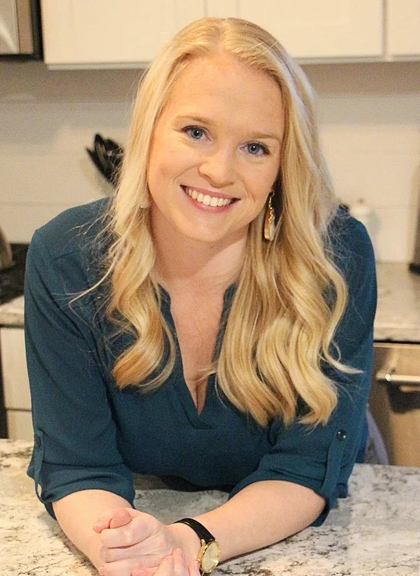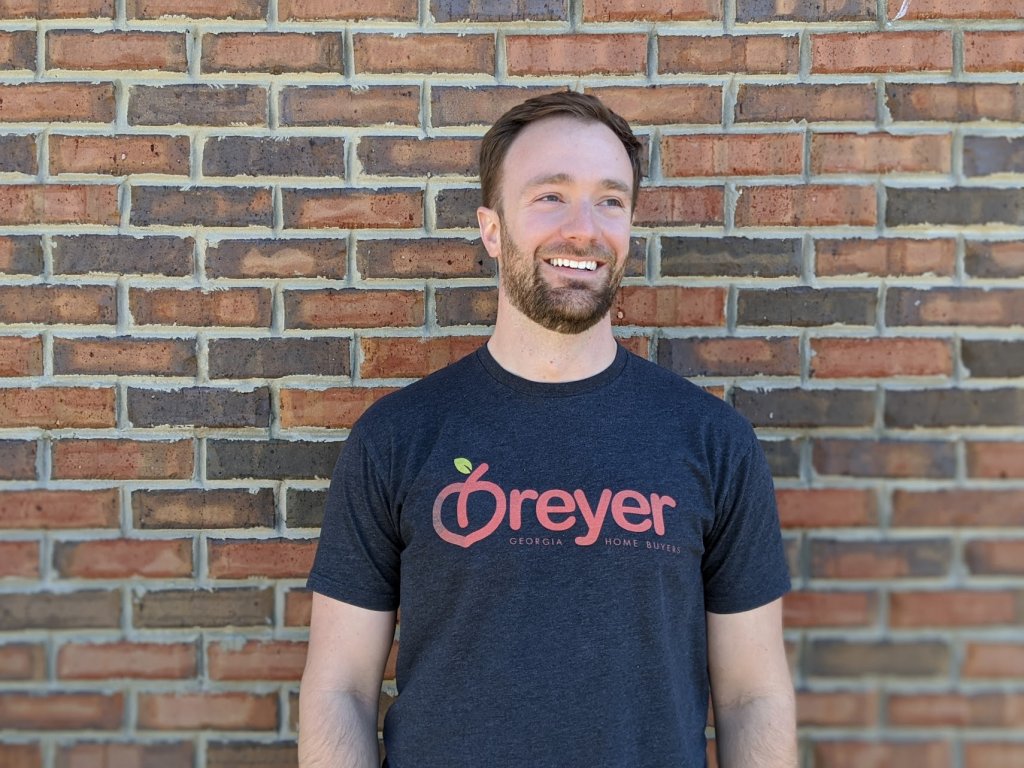I asked experts how they manage risk for their business? Here are the responses I get from 45 experts. Let’s look at the experts’ thoughts on risk management.

{ William Taylor – Career Development Manager at VelvetJobs }
I believe entrepreneurs can minimize risk by minimizing complexity in the early stages of business development. You should focus on a carefully selected niche and keep the early business model simple. At the time of creation, the new venture is desperately short of resources and managerial bandwidth. Starting out with a highly complex business model is almost always the “kiss of death”.
Bottom Line: Minimize risk by minimizing complexity in the early stages of business development.

{Simon Hansen – Founder and Sports Blogger at Best Sports Lounge}
As a digital entrepreneur with years of experience, I can definitely say that the best preventative measure that I’ve learned while managing my business is extensive research. Allocating a huge amount of your time to study and analyze situations, strategies, and trends allow you to plan and prepare you for the worst-case scenario.

{Nikunj Madhogaria – Founder of DealTohPagalHai}
Entrepreneurs often take a huge risk by waiting for the complete development of a product/solution before launch. Many times there are certain features that seem super important to founders, but in reality, they carry little to no importance to their customers. The vice-versa could be true as well – you might be neglecting certain features that bring a lot of value to your customers. This kind of risk can be managed by using an iterative product development cycle. I read about this method in “Lean Startup” by Eric Ries. This book is regarded by many as the “Startup Bible”. This is how the cycle goes like –
- Launch the first version/MVP (minimum viable product) with a basic set of features.
- Collect feedback from a handful of your ideal customers.
- Use this feedback to curate your product/service.
- Repeat the process with the next release.
This process not only helps you align your product with the market, but it also helps you in saving hours of effort which otherwise would have been lost in developing a feature that nobody cares about. Another advantage of this cyclic approach of development is that it prevents you from failing at scale. Eric Ries calls this a “scientific” approach since all the decisions made in this product/service development cycle are backed by data collected from real customers.

{Sara Roach Lewis – Founder of SRL.solutions}
Entrepreneurs can best manage risk through planning. Planning is not sexy but it is effective in managing risk in business.
The more you map out a plan for your business, the more likely it is that you are going to achieve success. Which by default means that you reduce risk.
But you say, how do you plan for the issues in your business that you can’t foresee – the known unknowns.
Well in a few ways:
- If you have a good plan for your business, it can continue to tick along while you are dealing with the unknown risk that has popped up. You are not in panic mode about regular operations.
- The more you build in a planning process to your business, the better you are going to be at seeing the risks and addressing them before they become a crisis.
So what does good planning look like to help achieve this?
You should know the vision for your business – where are you going and what do you hope to achieve 5-10 years from now.
What is the big goal for this year? ie double your revenues.
Then we plan out the year in 90-day chunks. That’s about as far out as our brains can actually imagine. So we make a solid plan for the next 90 days, review it each quarter and make a new one. Each new chunk is based on what worked best in the previous quarter.
{Jason Lavis – Managing Director at Out of the Box Innovations Ltd.}
Knowing that most new businesses fail quickly, and almost every business fails eventually, entrepreneurship seems very risky to an outsider. The risk isn’t random, though; it’s not like just happening to be in a building when an earthquake strikes. Understanding the types of risk helps us to mitigate them..
There are two main types of risk related to the concept and business operation. The most common point of failure is in the idea, and most startups fail to find sufficient product /market fit. They end up discounting until there’s no profit, spending more on advertising than margins allow, and other similar dynamics. Sometimes they launch to the sound of crickets. The way to manage risk here is to decide upfront, how much money you’re prepared to lose. Your time and money investment is your runway, and unless you make a profit, or someone else invests, when your runway is gone, so should be your business. It’s painful but better than bankrupting yourself while in denial.
Operational risk comes from harmful practices in managing cash flow, ignoring legal aspects, or hiring wrong people. The way to manage this risk is to get paid expert help. Pay a lawyer to advise on law. Pay a management consultant to look at your operation, and so on. Don’t fall into the trap of getting unpaid advice (unless you have a shark tank-like mentor, or asking people who aren’t experts.

{Roman Grigoriev – CEO and Founder of Splento}
As an entrepreneur, you have to accept that there will always be an element of risk. That’s a core foundation of being an entrepreneur: you are disrupting an industry and there are no guarantees.
“However, that doesn’t mean you just throw yourself into a business and hope for the best. Building a strong and expert team around you that challenges and checks you is a key part of managing risk, and so is creating a board of advisors. They should be leaders in your field and can bring you back down to reality if you’re about to dive into a risky adventure.

{Angela Bradford – Senior Marketing Director at World Financial Group}
One way to manage risk is by calculating the output to do something vs the input for it to happen. An example of this is when going into a new lease or purchase, it is important to look at ALL the costs to have the new space, while also checking out the inflows and what the growth could look like if the expansion idea worked.
Doing the homework to look at options also is very necessary. Not taking the first option but asking around and making sure that it is the best option.

{Will Craig – Managing Director of LeaseFetcher}
Learn from your mistakes and never stop fine-tuning your hiring process:
When you hire someone new, especially when you’re a start-up/small business, you’re taking on a massive risk! Over the past 5 years, we’ve made a few toxic hiring decisions but we’ve bounced back and learned from our mistakes. We’ve hired too early, we’ve hired without vetting and we’ve had to let them all go! To combat the risk associated with hiring new members of staff, we have set up a standard set of questions where candidates are scored based on knowledge and interview performance. Furthermore, we have all potential hires take a personality test, to give us an indication of their team as well as role fit. This has allowed us to make the hiring process as unbiased as possible and has made our previous three hires spot on. By paying close attention to previous mistakes – we’ve been able to iron out a good few of the risks that come with hiring new staff when you’re growing your business.

{Ollie Smith – CEO of Energy Seek}
In my opinion, obsessive planning and forecasting help you to anticipate and handle any shocks which might come your way. This is especially important for seasonal businesses that experience regular fluctuations in cash flow. Additionally, if you diversify your income – which means having multiple streams of income – you also protect yourself from any unexpected scenario. If one channel goes south, you have others that can take up the slack. Give these strategies a try – they work!

{Jason Noel – Founder of Infule}
Minimize Risk By Choosing The Right Business Structure:
When I first started my entrepreneur journey, I never thought about risk management. I wanted to do what I wanted to do no matter what. The first business I created was a wedding photography company. Then, in 2008, when the economy tanked, so did my business. It was only then that I realized I had a major flaw in my business structure. What was the biggest flaw in my entrepreneurial journey? Scalability & Residual Income! My wedding photography business wasn’t scalable as customers wanted me to photograph their wedding, they didn’t want an assistant they didn’t trust. Also, wedding photography wasn’t residual. I take that back, I did have one repeat customer in my eight years photographing weddings, and that was a funny phone call. “Jason, you photographed my wedding a couple of years ago, and I liked you so much then that I wanted you to photograph my next wedding this summer.” Haha, but aside from that, the business structure wasn’t set up for residual income month after month. In order for entrepreneurs to minimize risk in their business, the business structure HAS to be scaleable, have residual income or both. Is it any wonder that most companies are changing their models to a monthly subscription type model? The more customers that you can sign up with a residual payment plan, the more risk you can avert. If you have 100 customers paying you monthly and one fire’s you, your income only goes down by 1%. So find ways within your business structure to enable it to scale and incorporate a residual income structure and you will be set up to win.

{Ilya Radzinsky – Co-Founder & CMO of TaxDome}
Successful businesses require calculated risk. If a business is too “by the book”, how is it different than every other business out there? And unless someone has incredibly high certainty in their idea, taking too much risk can be a bad idea for both the entrepreneur and the investors.
Decision-making abilities are the most pertinent element worth putting time and money into and calculating risk and reward is step 1 of superior decision making.
For big decisions, I like to write down the pros and cons & construct decision tree diagrams. This helps me to see several possible outcomes and soften business risk with some critical foresight into the future.

{Kim Hawkins – President of EventsWholesale}
I would advise any new business owner to get legal advice about confidentiality and non-compete agreements before hiring anyone. Intellectual property can include suppliers, customer lists, advertising keywords, and other confidential information unique to your individual business. Our biggest challenge or roadblock was with our first employee who worked for us for several years. We trained her on everything having to do with running an e-commerce business and gave her supplier and customer information without a second thought. She had complete knowledge of confidential business practices as well as all of our advertising keyword information. Little did we know that one day she would go out on her own and start a competing online business! Moving forward, we always have all of our employees sign a non-compete/non-disclosure agreement to protect our business and prevent this from happening again.

{Andrew Gunderman – Founder and CEO of Vyra}
Entrepreneurs really need to have self-awareness when attempting to manage the risk they’re taking. You need to take a look at yourself and figure out what your risk tolerance is. If you’re young like I am, your risk tolerance should be much higher because I don’t have to worry about a family, a house, and I can eat dirt for a few years and be fine. If you’re older, have a family, have a house, etc you really need to be careful with the decisions you’re making. Any bad decision can cost you almost everything you have. If you’re in a situation where you can’t get out of that then you’re trapped. There are, of course, options. The biggest thing is communication. You’re going to have to communicate with your family why you’re doing whatever you’re doing. It IS your life. This is something they will need to understand. Live your life on your own terms. You just need to communicate with your spouse, family, or whoever and know yourself. If you can figure out your own risk tolerance in life it’s really easy to take whatever risk you need to. So much of it is assessing the pros and cons.

{ Faith Teel Co-Founder of Artisanbuiltins}
We manage risk in our small business by constantly marketing and advertising, even when our schedule is full. We post regularly on social media and keep up the SEO on our website… and we make sure that we’re always asking for photos, reviews and other social proof from clients.
This is what helped the companies that survived the Great Depression almost a century ago. The businesses that lasted were the ones that continued to advertise and put their message out there. This is why your ad budget should be the last to go when you’re trimming expenses.
Speaking of advertising, it’s my belief that every business owner should learn the fundamentals of direct marketing so that if for some reason you can’t pay for advertising, you can do it yourself.
We also have a “back up plan” to take on another type of work in case the economy really goes south. We currently specialize in custom bookcases, which is a luxury item, but we could fall back less skilled work such as trim carpentry if needed.
Last but not least, it’s vital to watch your overhead. If the economy slows down or you have a health crisis and you’re suddenly taking on fewer clients, it’s going to be a lot easier to stay afloat if you don’t have an office lease or other payment to make. We keep our overhead extremely trim for this reason.

{Shaan Patel – Founder and CEO of Prep Expert}
Be Adventurous, Not Reckless. I think that being a business owner already forces you to assume risk right from the start. As the question implies, though, it’s all about mindset.
In my journey, I’ve looked at my business as an exciting adventure that I am the lead character within. That forces me to both enjoy the highs but also acknowledge the lows that come with it.
I do think though that loving risk-taking too much opens you up to taking reckless chances that, over time, have a greater probability of harming your venture than the perceived extreme rewards you may be envisioning.

{Brian Robben – CEO & Founder of Robbenmedia}
Risk comes when an entrepreneur is overleveraged. This could come from owing aggressive debts, hiring below-average employees, not focusing on a sales pipeline, or having no money in the bank when the economy sours. If one of these scenarios describes you and your company, then you must take immediate action to lower your risk. For example, renegotiate your business loan for a more favorable interest rate. Do an audit of your team and only keep the A and B players, cutting the C, D, and F players who drag your growth. Invest in quality sales reps or marketing. And save up as much money as possible—don’t be fancy. I’ve never seen a company go out of business when they had a pile of cash saved. Just like it’s smart for individuals to have an emergency fund, the same is true for a business.

{Kean Graham – CEO of MonetizeMore}
Diversify: Make sure to diversify your revenue sources. In case your largest revenue source unexpectedly disappears, you would be diversified enough to handle the blow. The same goes with specialized skills or knowledge in your team. Don’t be too dependent on one person!
Market Research: You can decrease risk by being more aware of your market and trends so you can adapt sooner. The same goes for your team and clients. It’s important to have clear channels of communication so when something bad is coming up, you as the leader should know ASAP to adapt strategically. Lead time can be the difference between a light blow and a disaster.

{Rick Itzkowich – CEO of Qualitytube, Pytco, and Regiopytsa}
As the CEO of three manufacturing firms, I have a great deal of experience in managing risk—my companies rely on my foresight and leadership for their ongoing success. I am also a business author and a San Diego Vistage Chair for CEOs who want to exceed with the assistance of a peer advisory group.
Drawing on my more than 25 years’ experience in starting, selling, and taking over companies, the best way entrepreneurs can manage risk is through diversification. A founder, CEO, or other C-level executive needs to always be proactive when it comes to mitigating risk. They need to always be looking at everything, and I mean everything—economic conditions, suppliers, customers, industries, and key personnel.
If the bulk of revenues come from any one customer, product, or vertical, you are facing a high probability of financial disaster. The same criteria apply if you are relying exclusively on one supplier to produce your product(s) or delivery of your services.
The same premise goes for your team. If a person is indispensable, you need to mitigate the effects of their immediate absence. You can do this by proactively identifying the person who would be the best to take over or develop procedures to quickly place someone in the role.
In all these scenarios, you want to build upon the strengths of your company. What new products could you make for a new market using the supplies and equipment you already have in place? Continually engage in conversations with suppliers and vendors, so that you have alternate sources. Review your key personnel and have a plan in place to seamlessly make transitions.
A diversification growth and risk mitigation strategy help companies expand in new directions while managing vulnerability for the company–all the while contributing to the bottom line!

{Sam Williamson – Owner of CBDiablo UK}
Many entrepreneurs will make the leap to start their own business, cutting ties completely with their previous employer. But if you can manage to stay part-time with your old job, ideally on a consulting basis so you don’t have to commit too much time, you can reduce the risk associated with starting your own business by having a steady and consistent source of income. If you manage to arrange this with your old job then you will be massively reducing the risk associated with starting your own business.

{M. Kim Saxton – Co-Founder of Diagnotes}
People sometimes describe entrepreneurs as risk-takers. They see starting a company as a risky activity. Yes, there is a risk involved. But, navigating uncertainty rather than being risky is the essential task of the entrepreneur. What to build, how to build it, whom to partner with, whom to sell to, and how to fund growth… these real tasks laden with uncertainty.
You might ask, aren’t risk and uncertainty the same thing? Well, actually, no they are not. In risky situations, you know the outcomes and probability of the odds of them occurring. In uncertainty, you neither knew the possible outcomes nor the odds of them occurring. In fact, academic research has shown us that the brain processes risky information differently from uncertain information. Risk assessment is a more rational, cognitive approach – evaluating the odds. Dealing with uncertainty requires integrating across both halves of the brain, combining both a cognitive and emotional component – intuiting the outcomes and evaluating their potential.
What are some best practices for managing uncertainty?
- Recognize that the issue is uncertainty. You simply cannot know exactly what is the best next step. It’s part rational and part emotional. You have to get comfortable with not knowing and be okay with it.
- Experiment often and fail fast. Startups almost never “get it right” the first time. Experimentation and learning from the results are key. Even Thomas Edison said, “I have not failed. I’ve just found 10,000 ways that won’t work.”
- Seek feedback and advice through networking. Whether from possible co-founders, advisors, customers, design teams, or mentors, there is a virtual army of support for every would-be entrepreneur. Find a tribe to support you.

{Oliver Dale Founder and Editor-in-Chief of MoneyCheck}
As a startup, you must be willing to take on some risk. It’s just part of the deal when you want to push the boundaries and truly create something new and unique. However, one thing that helps minimize risk is to be diligent when it comes to research. I say it all the time: do your homework. Do a thorough, formal review of the business you want to start, understand the marketplace and competition, and what possible challenges you’ll face. Going into a startup prepared will help you mitigate and deal with problems that do pop up.

{Simon Nowak CEO of Authority Dental}
Business risk management is the key to business survival in difficult situations. I’ve been watching the coronavirus situation around the world and in many countries, events are canceled. The airlines ground the aircraft. It’s also risk management – actually, it’s crisis management now, but from an entrepreneur’s perspective, it requires similar analysis.
Risk management is so broad that you can write a book about it.
In the classification of the Project Management Institute, there are 6 stages:
- planning,
- identification,
- qualitative analysis – assessing the significance of threats,
- quantitative analysis – the probability of occurrence,
- risk prevention planning,
- monitoring and control.
In the case of small companies, everything is done by the owner, who has to shorten and narrow these activities down as much as possible in order to have time to do business. So you’re analyzing basically the market – you predict what can affect sales areas and how negative it can be for you. Example:
- You are running a business related to e.g. production based on oil-derivative substances – the government may introduce additional taxes on the transport of products. Effect: lower-income on the same amount of product, action needed: increase in production or price decrease of the process.

{Chayim Kessler, Founder, and owner of Miami Beach CPA}
Doing business generally includes a certain amount of risk-taking. I manage risk by taking the perspective that risk is an opportunity, and vice-versa. Gaps in the market are opportunities for any entrepreneurs. They are also risks that entrepreneurs can take, so it’s important that preliminary research or feasibility study is conducted to have a better understanding of the industry.
The other side of identifying opportunities in uncovering risks. An entrepreneur who studies consumer behavior will have a better grasp of how to mitigate risks.

{ Liz Brown, Founder of Sleeping Lucid}
A few ways that can help entrepreneurs manage risk by constantly preparing for the worst-case scenario and having a few back-up plans in case the first few strategies don’t work out. Entrepreneurs should also develop an open mind and not be afraid to seek professional advice from their peers and betters. Since the world of business is an unpredictable place, it helps to have all the information you need.

{Andy Smith Co-Founders of ICEFLO}
As entrepreneurs, it’s important to manage risk. The best way to do that is to gather enough information as possible before making a decision. Now, that might not always be possible, especially in dynamic tech space. When it isn’t possible to gather enough information to make a decision, one can turn to a team of trusted advisers or a co-founder. Another way to manage risk is to try experimenting with a decision to see the results. From there, one can decide to go all-in on a decision if the experiment went well or did not go well. Sometimes these small ventures can lead to great results, or save the company precious time and money.

{Mike Golpa, CEO of G4byGolpa}
Managing the risk means accepting uncertainty that comes with it. While we should, obviously, strive for minimalizing the guesswork, this ambivalence is an inherent part of what makes a risk. Let’s embrace it.
Don’t let the failure take you by surprise. Some inexperienced risk-takers are over-optimistic. “If it will go well, then great; if not, then we’ll see” – it’s not a strategy or management. So be ready for all potential outcomes. Have plan B, C, and D if necessary. Stay updated.
Find a balance. I consider it the most important advice in all areas of life.
Don’t take a risk for its own sake, pursuing any occasion that appears. But don’t fall into the other extremum – if you are sure about every aspect of a given opportunity, it’s a smart decision – but not risk.
Not many people have innate confidence at taking the risk. But it’s a skill that anyone can learn and the best way to do it is practice.

{Tim Uittenbroek – Founder of Blinklist}
Entrepreneurs go out of the way to take risks, in order to get potential profits. They understand the fact that to achieve their goal a certain level of risk-taking is important.
There are different levels of risks that an entrepreneur has to take which are associated with the development and selling of the products as well as the profits which are gained by selling these products. Apart from this, entrepreneurs have to face budgetary risks. But, implementation of risk management strategies helps an entrepreneur to identify, assess and manage risk. These strategies can be implemented over personal as well as business risks.
First of all, risk can be transferred to insurance companies to get insurance against main risks including product liability, danger risk to the company’s facilities or injuries to customers and supplies. A risk analysis can be performed to evaluate the outcomes of certain risks. Risk which can give a company a hard time should be avoided.
Quality assurance program implementation can reduce the risk of quality failure. QA programs include the documentation production, testing methods and corrective plan for the institute. A system is established to control particular actions and to evaluate this system control and reporting criteria are checked. Financial risk is decreased by maintaining the accounts and indirectly identifying the low credit risk. For this, standards are implemented on payment and credits, evaluation is done for the payments. If a customer does not meet the standards then advance payment is an option that is given to such customers which reduces financial risk. Everything should be planned broadly including the marketing methods, pre and post success plans. In case you forecast risk, risk management techniques can lessen the effects of risk. Entrepreneurs should utilize their skills by standing a new opportunity. Although it’s a great risk, picking such an opportunity can be a great deal.

{Amy Nesheim, Founder of Artful Contracts}
Entrepreneurs with service-based businesses can manage risk by having a solid client contract from the very beginning. All entrepreneurs should understand that there is no way to eliminate all risk from a new business venture. But having a solid contract in place can reduce the risks (both in quantity and in dollar amount) a new business faces.
A contract ensures that the client has clear and realistic expectations, which leads to a satisfied client. A client who is satisfied with the business’s services and does not feel cheated by unmet expectations is much less likely to sue. A contract also provides evidence of the exact agreement between the entrepreneur and the client that can be used as leverage if the client fails to pay. Perhaps more importantly, a contract can include clauses that protect the business from certain liabilities that many new entrepreneurs may not consider, such as confidentiality clauses, licenses and intellectual property rights, limitation of damages, and indemnification.
Setting out the rights and responsibilities of each side clearly in writing before any work is done is the best way for a service-based entrepreneur to limit the risks inherent in taking on clients.

{Mike Bran, Founder of ThrillAppeal}
New ideas need a good business plan, but it does not mean that there remain no chances of failure, the risk always remains. I still prefer to outsource as many services as I can instead of investing a tremendous amount of money in the initial phase. For example, I will prefer to hire a freelance salesperson instead of hiring my own sales team. It becomes challenging to pay full-time resources rather than contracting.
By doing so, a business could do its plan’s testing by spending comparatively a small portion of the budget. The mistakes could be improved instantly because of not fixing things in the initial phase. Contrarily, the fixing approach has risks associated with it, and it can cost you much in case of failures.

{Shawn Breyer, Owner of Atlanta House Buyers}
Focus on Marketing Assets – Not Marketing Liabilities
One of the biggest risks for an entrepreneur is running out of capital. As a business owner, you should be focused on building marketing assets. These assets continue to generate leads for your business even if you are unable to invest money into them. When you think of marketing, focus on building assets instead of liabilities. A marketing asset is something that you can create or buy that, once set up, will continue to create leads and income. These can be YouTube videos, SEO, or Facebook Lives. When you develop these marketing campaigns correctly, they will snowball to build your targeted traffic and your income. With time, they will produce enough income so that you can reinvest the money from these channels into paid marketing to scale your business faster.

{Peter Deans, Director of The Regtech Association}
In the first instance, business owners and managers can simply consider “what can go wrong” with either existing business practices, or with the design and implementation of any new products or business initiatives.
It is however recommended that start-up and small businesses undertake a four-step process to identify and manage business risks. The four steps comprise (1) Conducting an initial workshop (or series of workshops) to identify and assess the business risks the business or venture faces (2) Using the outputs from the workshops to develop a Risk Management Strategy or Action Plan – for start-up ventures a simple action plan of things to be done (3) Allocate Responsibility for each business risk identified – as with any business strategy or initiative, it is important to allocate responsibility for the management of each identified business risk and, finally, (4) Establish a management rhythm to ensure that there are regular discussions about key business risks, receive updates on any changes since the initial workshops, and review any management reporting in place.

{Calloway Cook – President of Illuminate Labs}
My suggestion for entrepreneurs who want to manage risk while running their business is to raise funding rather than use their own assets to launch the business, even if it means giving up equity in the venture.
It’s romanticized in our culture to “go all-in” on a project you’re passionate about, but it’s an unwise financial decision to do so. The vast majority of businesses fail. Even successful businesses don’t usually make much profit in the first year or two.
By raising money to fund the business, you make it essentially an all-upside proposition as far as your own finances are concerned. You either grow the business to the point where it’s wildly profitable and you’re making lots of money personally, or you fail and you don’t lose any money because you’re just back to where you started.

{Luka Arezina – Co-Founder of DataProt}
There’s one way every entrepreneur can learn how to manage risk, and that is to learn how to plan properly and forecast the possible dangers. Identifying potential risks should be done at the beginning of the business process, and should be a part of a business plan. Whenever entrepreneurs come across the idea they want to put into motion; they need to plan every aspect of it, marketing strategies, and risks to reduce possible damage in the future.

{Syed Asghar – Founder and CEO of The Hire Street}
Having started The Hire Street some seven years ago in my early 30s, entirely self-funded, I am no stranger to risk.
When running a business one must understand the nature of the risks being taken. One thing I have learned is that perception of risk does not equate to actual risk. The perception of risk is colored by your age and experiences. The impact of our recent experiences is most acute. I know fellow businesspeople who after coming out of success exist took wild risks. Their recent success reduced their perception of risk. The converse is also true.
The main existential risk for most start-ups is running out of money. Whist many new founders are often focussed on the threat of competitors they would be better off focussing on keeping the lights on until market fit is achieved. It can be helpful to think of how much time you have at your current burn rate before you run out of money. Will you focus on reducing your burn rate to keep you going until you get to profitability or will you raise capital? If you indent to raise capital this can be time-consuming so it must be planned for well in advance.
These aren’t the only risks businesses face especially in their early years. In order to help manage risk without emotions, I find it helpful to put things down on paper. You should consider: What happens if the risk materializes? Could you easily pick yourself up and move on? Rank your risks. Not all risks are created equal. Slot your risks into quadrants based on impact and likelihood. This will focus the mind on the risks that are most dangerous and most likely to occur. Lastly, when mitigating risks don’t lose sight of the opportunities that lie before you.

{Manny Hernandez – Co-Founder and CEO of Omni Inc.}
One of the most essential qualities of a good entrepreneur is the ability to perfectly understand and manage risks. Some risks can be avoided while some are inevitable. Some entrepreneurs don’t consider the opportunity cost of staying put and not trying out new endeavors, this is why risk management is an important skill every entrepreneur must possess. Below are a few suggestions for entrepreneurs to approaching and managing risks in their business.
- Learning to accept and embrace uncertainty.
- Understand that risk is opportunity
- Weighing the risk
- Pursuing a new opportunity
- Trust the process
- Reduce Financial Risks
- Use Insurance

{Tiffany C. Wright, former CFO and COO of The Resourceful CEO}
The biggest risks for the average non-heavy industry entrepreneur is cash, market downturns, and employees. Using a 12-week cash flow projection enables me to consider what is happening now that is impacting the future and what is happening in the future that I need to address. Reading the Wall Street Journal and various magazines, blogs and trade journals enables me to keep my pulse on what is happening in the broader market, while participating in local business groups helps me stay abreast of what’s happening in my market. Reviewing my financial statements and related KPIs at least monthly and tracking trends enables me to see trends and identify potential issues or opportunities in advance. Finally, regularly backing up everything to the cloud ensures that the data is available when needed should a disaster occur.
For larger firms, key person insurance and a succession plan is critical to ensuring continuity should something happen to the actively involved owner/CEO or her first lieutenant. In addition, a supportive company structure that rewards employees for their contribution to achieving company goals will greatly reduce employee risk, especially turnover, beyond the usual CYA human resources staff. Furthermore, if you have a key employee that could run off with your competitive know-how or customers, you’d better have a signed non-compete and confidentiality agreement on file!

{Paige Arnof Feen, Founder & CEO of Mavens & Moguls}
I started a global branding and marketing firm 19 years ago. Earlier in my career, I worked in Brand Management at Procter & Gamble and at P&G everything starts with Market Research. They drill into you the importance of customer data to make decisions. It does not matter what you, your friends and family like it are all about your target audience and what motivates them to purchase. At P&G we did lots of customer satisfaction monitors, quantitative (surveys) and qualitative (focus group) research over months but as a small business owner, you have to be scrappy and work fast with a limited budget. When I worked in the cosmetics business at P&G, for example, we did anthropological research to watch women put on their makeup and beauty products in the bathroom which was fascinating to see their habits and practices. Surveys can also help you collect data on habits and practices and focus groups allow you to probe deeper and ask questions to test assumptions. I remember one series of teen focus groups we did with makeup where we talked about products and shades but the real insight came from which colors they took with them to go home not what they said in the room where they may want to fit in or one voice can dominate or they may not want to speak up.
When real customers are willing to pay real money for your product or service, you have a real business. Start with the fundamentals: Who are you and why should anyone care? If you’re not passionate about what you’re doing, then why should anyone else be? There’s a lot of noise in every category, so if you don’t have a unique story to tell and a new approach or idea that excites you, then go no further. Every great business is built on a great story so start telling yours to potential customers and see if they buy what you’re selling. Testing should always be done with real customers, not with family and friends (who may only tell you what they think you want to hear so they don’t hurt your feelings). Conducting market research helps manage risk so in my experience making time for due diligence is critical.

{Sumitra Senapaty, CEO and Founder of WOW Club}
In today’s work environments, learning to manage risk can definitely give you an advantage over the competition. Office cultures are trying to balance innovation with risk, and many are finding that this is more difficult than they originally thought.
Managing risk comes down to knowing when to pivot and being prepared to do so. Once a company is invested in a particular strategy, it may be hard (both emotionally and from a business standpoint) to cut your losses and go back to the drawing board. However, this process is at the very core of any truly innovative organization. To take on the risk that comes from thinking outside of the box, you must be ready to know when to change your strategy on a dime without accruing too much loss of revenue. This allows companies to create an ideal balance, resulting in many rewards from understanding how to manage risk.

{Andrew R Taylor, Founder of Net Lawman}
Speaking to many business owners in my role, and building Net Lawman from the ground back in the early ’90s, I have found that many business owners are not actually big risk-takers. You might be surprised to hear this, however, taking a risk and taking a leap of faith in yourself are two completely different things.
So when it comes to managing risk, as a relatively conservative business owner, my advice would be to let the process run through to the end. Often you feel a tug of fear that makes you want to back out, to save face and get away with something still intact but if you see things out to the end you may be pleasantly surprised.

{Andrea Loubier, CEO of Mailbird}
Managing risk is a tricky business. You want to ensure that you’re not putting your revenue in jeopardy, nut you also don’t want to take the chance that you are running your company “too safely.” To do this, you need a mixture of new, exciting ideas to implement, as well as older, more stable clients who expect the same thing every month. In creating this balance, it enables you to be able to take regular risks, knowing that you have dependable accounts to fall back on in case your latest brainstorming session doesn’t quite pay off.

{Michael Nemeroff, Founder, and Former CEO of RushOrderTees}
The best way to manage risk is to diversify your sources of income. If one source of income falls, you have several sources of income to fall back on and reduce the impact of a failed business venture. In other words, don’t put all of your eggs in one basket. However, this does not mean you shouldn’t give a business venture 100% effort, this just means you should not rely on that venture for 100% of your income.

{Brandon Amoroso, CEO of Electriqmarketing}
Well for me it is a balancing act. You have to take risks to grow as a company and as a person. However, it is important to think of those risks through and decide whether or not the risk is worth the reward. Another possible way to balance out risk is by taking a risky choice, but having a backup plan already set up in case that item falls through. You can never be too prepared, especially when it comes to the unknown.

{Cassie Petrey Co-founder of Crowdsurf}
The hardest part about risk sometimes is the psychological feeling that you might fail, rather than the actual possible negative result of the risk you are taking. The mind game is the hardest part. If you can accept that, and get out of your head… taking risks and being pragmatic about it all becomes way easier.

{Jennifer Barnes, CEO of Optima Office Inc.}
Managing risk is ongoing. You must constantly be thinking about what could go wrong and have a backup plan or two. If you have a risk of running out of cash, you need to be three steps ahead and have a line of credit or a loan in place ready to fund in case your worst-case scenario occurs. I find that whether it is a security/IT risk, or an HR/Employee risk, you need to think of plan B and plan C. You must constantly be thinking about ways to mitigate and manage risk. Often times your backup plan may include hiring experts on an outsourced basis, such as an outsourced IT company or a fractional CFO who is making sure that your accounting department is running smoothly, and you have accurate financials. Don’t be afraid to hire experts and bring them into your organization. The most important thing you can do as a business owner or CEO is to manage risk with backup plans. You don’t want anything to fail under your watch, and if you have multiple backup plans, and things fail? Well, then it just wasn’t mean to be. Learn to pivot quickly and find the next viable solution.

{Michael Alexis, CEO of Team Building}
TIP: Create a “virtual” version of your product or service
“I had planned a research trip to China to learn about team building culture in those markets with the goal of expanding beyond North America in 2020. Now those expansion plans are on indefinite hold, and we are focussing our efforts on winning back clients who had to cancel with new virtual products.
For example, we launched an entirely new wing of our business in less than 24 hours called Virtual Team Building Activities that we can facilitate via online calls. The expectation is more people will be working remotely, and still need ways to connect and bond. We also know that we can win back some clients who had to cancel their in-person events with us due to the coronavirus.
Thank You All

















































































